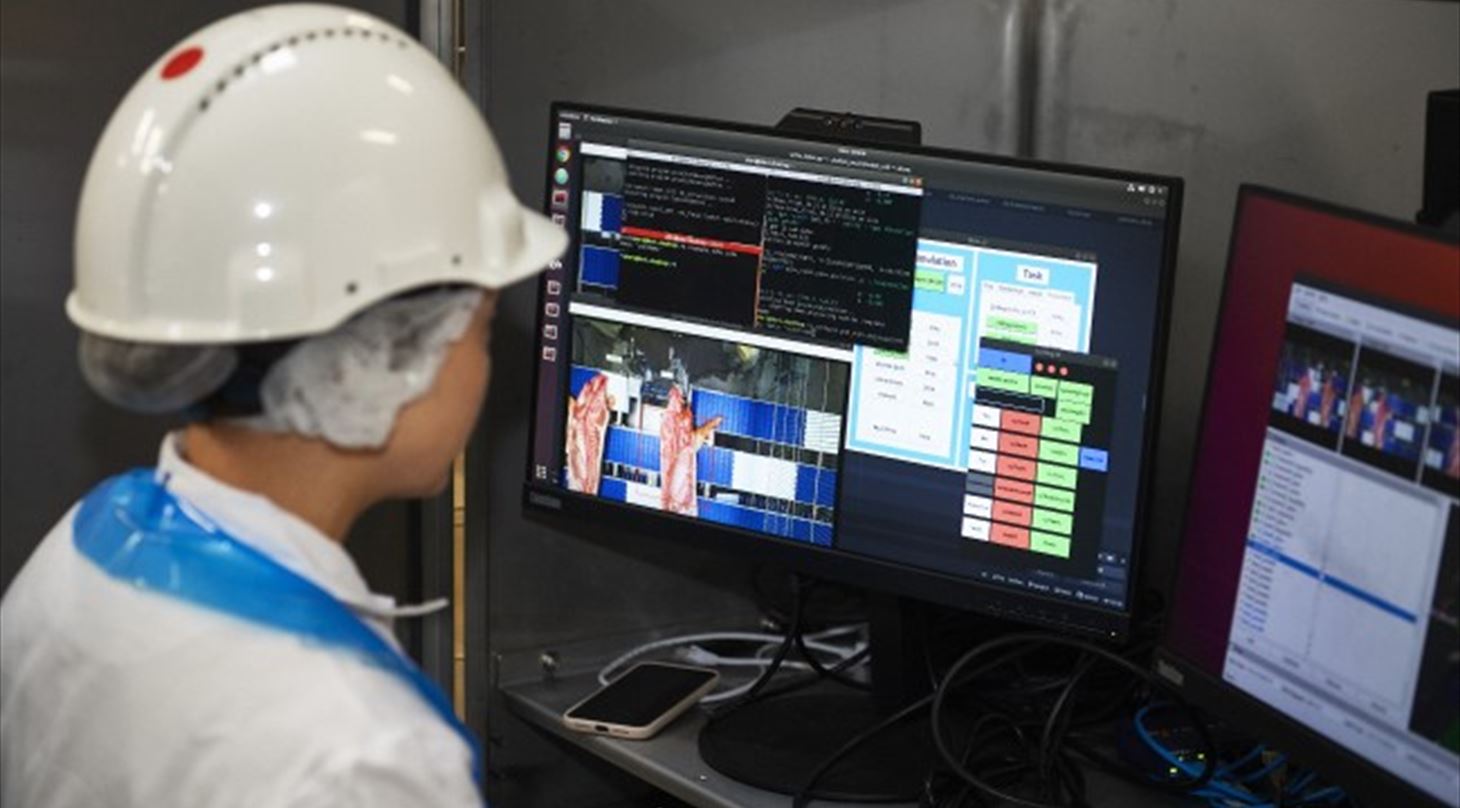
Historic contribution – future even stronger
For decades, we have been at the forefront of introducing groundbreaking technologies to the international meat industry. One of our most significant innovations is the Backloader CO2 stunner, designed to humanely stun pigs prior to slaughter. This pioneering technology is widely used and sold across the globe.
Another notable advancement is our 3D Derinding Robot, equipped with a patented measuring and knife system. Featuring eight individual knives, the robot automatically processes pork loins to achieve a precise rind (lard) thickness tailored to customer specifications.
Innovations that stand the test of time
Over the years, we have developed numerous cutting-edge solutions that continue to shape the industry. These include a robotic system for extracting ribs from pork bellies and advanced automated equipment for splitting and separating pig carcasses. In fact, one of our earliest contributions—equipment for splitting pig middles—remains a staple in meat processing operations worldwide.
Our expertise also extends to the development of automated systems for organ removal, such as extracting hearts, livers, and residual products like leaf lard. These solutions ensure efficiency and precision in every step of the process.
Shaping the future of meat processing
As the industry evolves, the future of meat processing is increasingly automated. Danish Technological Institute is paving the way with innovative solutions, including a fully automated robot cell capable of performing six different pork cuts with unparalleled precision.
In the years to come, slaughterhouses may become nearly fully automated, where robots seamlessly handle the manual cutting and slicing tasks traditionally performed by workers. At DMRI, we are committed to driving this transformation, ensuring greater efficiency, accuracy, and innovation for the industry.